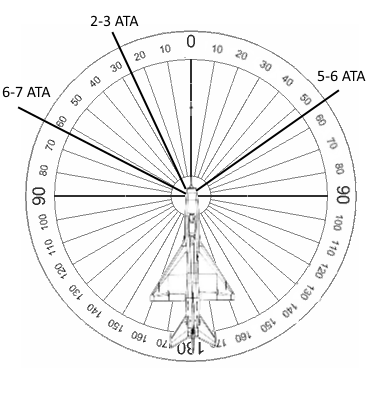Tactical Combat Flying For Two – Part 3: The Debrief
By @near_blind and @Fridge - May 15, 2016
Originally published at: Articles - Mudspike Forums
In the previous parts of this series, we discussed tactical formation as a tactic and Fridge and near_blind recounted their adventures while applying this knowledge in a combat mission. Here we have the debrief that followed their mission.
You can read Part 1: The Tactics here and Part 2: The After Action Report here.
Debriefing
Wheels chocked, shutdown complete, canopy cleaned and locked, shadows of the pilots retreat down the flight line as at least one humbled nugget heads to the barn while the crew chiefs count holes in their airframes. It is time to debrief.
You can’t take things personally in a debrief. Not if you want to get better. Not if you want to not get your wingman, lead, or entire flight wiped out in the face of the enemy. This is where the lessons are studied after the crucible of the merge.
The Analysis
The goals of this mission were simple:
- Implement Tactical Combat Flying to work against an adversary as a team
- Engage with and defeat an enemy
Let’s see how we did.
Note: this engagement was intended as a training flight for a pair of virtual pilots with divergent ACM/BVR skills. In a typical multiplayer environment, someone has a higher level of knowledge, faster reflexes, and/or a more natural feel for the flight and fight than the others. This does not mean that the less capable player should be relegated to the fringe of the fight. This is not real life, and the slow OODA-loop guy is not going to cost you your life. Everyone learns at a different pace and the best communities show patience with their players. It is, arguably, more important to learn and fight as a team than it is get individual kills and success. That newbie, once you train him or her, is going to save your bacon one day. After reading near_blind’s side of the encounter I realize that I have a lot to learn and also that I have a great environment in which to do that.
Item 1: En-route
The first part of the flight went pretty well. Flight lead and wingman were able to keep position and maneuver into tactical formation at the appropriate time. The transition from the en-route formation to tactical line-abreast was a little sloppy, but well within where I wanted to be after only practicing this once before and in a non-threat environment!
Item 2: Tactical formation
Tactical formation worked well. The lead/wingman pair were able to: focus as a group; target a single designated threat; and maneuver and kill the threat as a group. The separation between flight lead and wingman was tighter than it should be, but given some additional practice, familiarity, and confidence, the formation will open up to proper spacing.
Item 3: Engaging the MiG-29 threat
The initial engagement went well. The first salvo had the intended affect and the flight was able to maneuver properly for a second shot. Second shot went well.
Tactical Question: Should the wingman (me) have turned with lead to the right instead of turning left?
My opinion at the time was that I made a mistake in turning away from my lead. This made rejoining with my lead difficult as I lost sight of him turned a rejoin into a two circle fight. After more reflection, it allowed our element to turn back into the MiG-29 in a pincer move – meaning that both ships in the F-15C flight had adequate maneuvering room to engage the remaining MiG-29 at will. This turn was also into the forgotten-about MiG-21 flight.
Fridge continues his turn left into the forgotten about MiG-21 threat.Item 4: Maneuvering on the MiG-29 at close range
Closure and maneuvering with the burning MiG-29. The overshoot robbed the flight of time, allowing the MiG-21s to close the distance and get into the fight before the F-15C element could regroup and commit.
Fridge presses on the MiG-29 but position/angles/aspect aren’t too great to start with and … … by the time he commits he is already too fast, turning too tight, set up to overshoot instead.Subject matter expert Klarsnow provides some feedback inputs:
Number 1, you went early. Wait until he is about thirty degrees low before you turn and pull, you can see this on your radar, or about the time he is about even with your rudder pedals.
Number 2, you kept your speed throughout the dive and started fast, this led to a massive overshoot. One of those rules of thumb that actually work: if the bandit is below you and you are doing a pure vertical conversion, you wanna be at the same speed as him. You will gain speed in the dive and in your position you had the energy to just pull to bleed the speed as you go around the corner.
Also other general rules of thumb for vertical conversions: you wanna have more than 10 to 15 KFT altitude above or below the bandit to give yourself room to turn. If you do not have that, then turn obliquely and do not be afraid of popping the boards (speed brakes) to keep your closure under control.
Now I do not know if you were turning at him with visual or based off the radar lock, but a few tips and techniques for getting this stuff done never helps. In the visual arena it’s just make it happen, but be aware of your closure.
The second part of this is understanding the aspect angles between your aircraft and the target. Klarsnow shares this in a visual depiction:
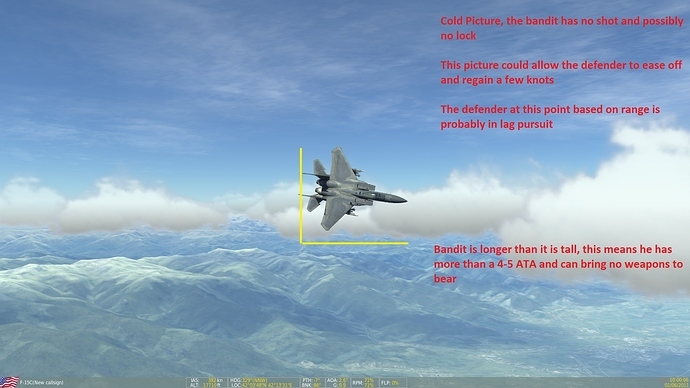
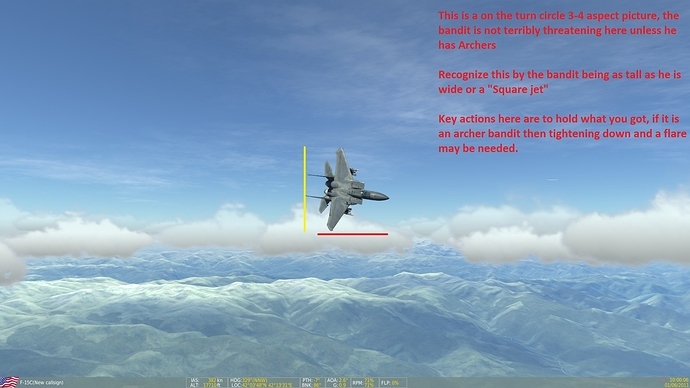
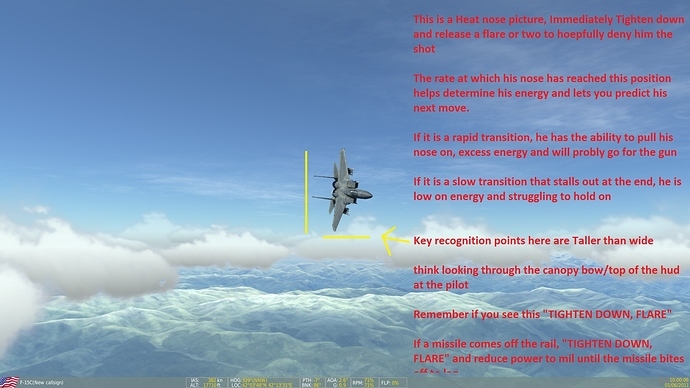

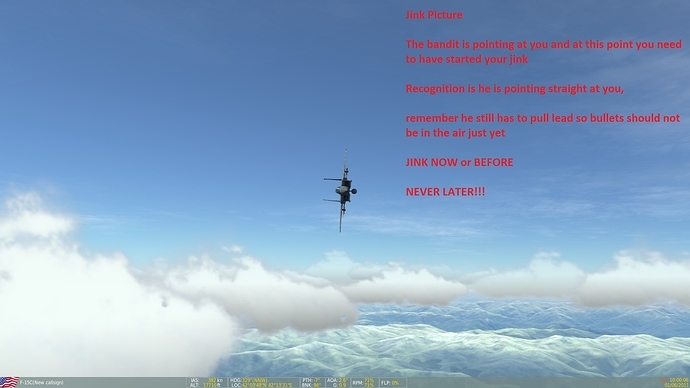

Item 5: The MiG-21 threat
Ignoring the fact that I lost my lead after the MiG-29 fight, my thoughts are that I was slow in rebuilding the tactical picture. I had tuned out AWACS at that point. I knew, roughly, where near_blind was but 1) did not realize that he had re-engaged, 2) did not realize how close the MiG-21 flight was, and 3) did not start working the radar as soon as I made the turn back toward near_blind, shortly before taking that missile shot in the belly. There were a number of factors that, had I been listening to them, would have allowed me to get back into the fight. Lesson learned: if you know there is someone close and dangerous, chaff and flare dispensing will be your friend.
Video Debrief
As part of this mission, I recorded in-game video from my perspective. I was able to sync this up with a recording of the mission data taken by Tacview. In putting the video together, I couldn’t decide which should have the focus — the in cockpit video or the Tacview recording — so I made one of each.
Cockpit view with TacView PIP
TacView with cockpit view PIP
Summary
Tactical formation flying isn’t for everyone, but it’s easier to learn and apply than airshow formations, improves situational awareness, mutual support, and is a powerful force multiplier … when it’s done right, and you can’t do it right without practicing. So get out there and practice. As you can see from our experiences, you don’t have to be perfect every time – you just have to learn something every time.











